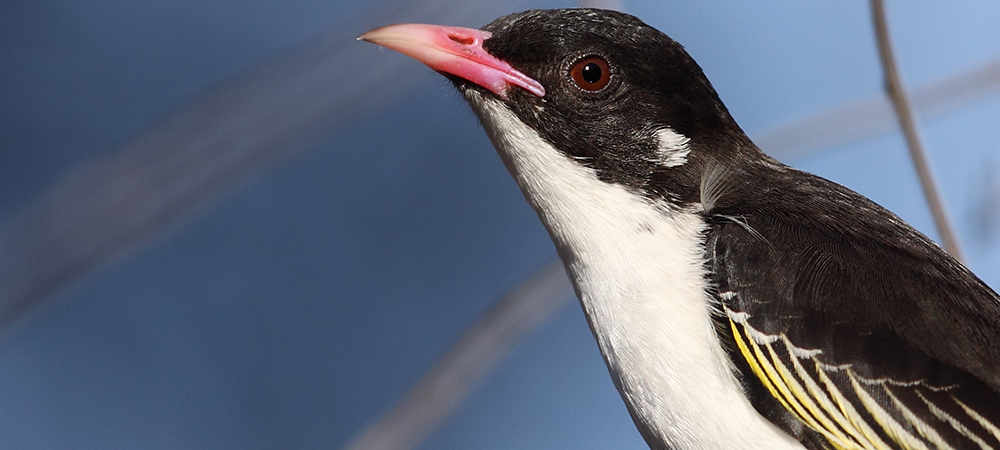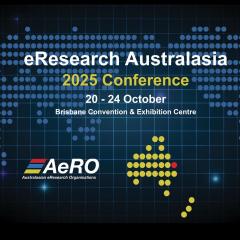
The Australian Government currently lists more than 1,800 species of animals and plants in the nation as being at risk of extinction.
Surprisingly, Australia currently does not have national reporting on threatened species trends, a situation that has major policy and management consequences.
A Threatened Species Recovery Hub research team, led by the University of Queensland (UQ) in close partnership with Birdlife Australia, is working to plug that gap, with help from RCC.
The Threatened Species Index (TSX) project, led by UQ’s Professor Hugh Possingham, is developing a tool to allow holistic reporting on the broad status of Australia’s biodiversity, as is routinely done for the economy.
The index provides reliable and robust measures of changes in the relative abundance of Australia’s threatened and near-threatened species. The index can readily be interrogated and interpreted at a range of scales and for individual groups of species.
It will also support more coherent and transparent reporting of changes in biodiversity and will assist those working towards protecting threatened species.
This is the first time a threatened species index will be created in Australia, and in fact, worldwide.
The project comprises researchers throughout Australia and involves collaboration with the Commonwealth Department of the Environment and Energy, including Parks Australia, representatives from all states and territories, a number of universities, and non-governmental organisations, such as the Australian Wildlife Conservancy.
One of the project’s outputs will include the development of a comprehensive national threatened species database, which will allow for the integration of the index in perpetuity.
Dr Elisa Bayraktarov, the postdoctoral research fellow driving the project, said such an index not only needs a sound method to calculate and visualise the changes in threatened species populations – it also requires data. Lots of data.
“We had already engaged with many scientists, state and territory agencies, recovery teams, and citizen science groups, and soon more and more data were accumulating. It became evident the data that we had gathered from more than 60 different sources would have to be processed in a consistent and repeatable way,” said Dr Bayraktarov.
Terrestrial Ecosystem Research Network (TERN) Data Science Director Dr Siddeswara Guru suggested the TSX would need a repeatable automated workflow to streamline the processing of raw data into a format used to run the models for trend analyses, which would visualise the rate of change in threatened species populations.
Through his previous work with RCC, Dr Guru recommended bringing one of RCC’s scientific workflow experts on board.
RCC’s Dr Hoang Nguyen joined the project’s team in March 2017, to work with ecologists, such as Dr Bayraktarov and BirdLife Australia’s data analyst and bird monitoring expert, Glenn Ehmke, and software engineer James Watmuff from industry partner Planticle, on the automated workflow.
Mr Ehmke provided Dr Nguyen with an intricate but genius roadmap for all processes that needed to be incorporated into the workflow.
Dr Nguyen is helping to optimise and finalise some databases and programming scripts needed to create the TSX, and is using Nimrod, a specialised parametric modelling system, to process the combinations of indices, such as drilling down into indices based on functional groups, such as shorebirds or seabirds, or by threat status, e.g. near-threatened, vulnerable, endangered or critically endangered. Currently, it is also possible to produce an index for each Australian state and territory.
Indices can be numerous. One index for birds across Australia, as an example, could have about 25,000 combinations. Dr Nguyen uses Nimrod to computationally process those combinations and make them viewable via a web portal for further investigation.
All that data processing requires a computer powerful enough to crunch the numbers, and with security and sufficient storage to store the data. For that purpose, the project team is using a Nectar node in QRIScloud, a cloud compute service jointly operated by RCC and QCIF. Sub-contracted by the bird data host, BirdLife Australia, the QRIScloud node is also providing server space for the project database and website used for development.
Research Data Services (RDS), a federal Government National Collaborative Research Infrastructure Strategy (NCRIS) project, partly funded QRIScloud’s data hosting and the workflow development to create TSX.
“We’re using QRIScloud to run the combinations of indexing, using about 100 cores, and it takes about 10 hours to run all the combinations, that is, about 25,000 combinations,” said Dr Nguyen.
Dr Bayraktarov regards Dr Nguyen’s support as invaluable. “Hoang implemented tasks that we thought of as impossible or at least too difficult to be completed by our deadlines, such as to automate the analysis by carrying out more than 25,000 permutations of index calculations, depending on what parts of the entire database of processed data would be used.
“Without Hoang’s help, the index project wouldn’t have a repeatable automated workflow entirely based on open software. This means, that we would have had to carry out all analyses manually and repeat each time data are updated or new data are added.
“The workflow is particularly important to update and improve the index over time. There is little point to invest in efforts such as these if they are not repeatable and largely automated. The workflow represents a landmark achievement in streamlining and automating tasks which would otherwise take months to complete for each index iteration, thus would render it a futile exercise in the light of the urgency for a need to report on our threatened species periodically.
“We now have a prototype web-visualisation tool that can be used by the team to interrogate the index depending on preferences regarding the group of species, the range of data or region for which the index should be calculated and visualised. We are seeking further funding to get it fully functional and make it available to the public user.
“Hoang has been also instrumental in developing several visual diagnostic tools, which can be used to infer on the robustness of the index,” said Dr Bayraktarov.
Dr Nguyen has enjoyed working on the project, due to its national and global significance and the team involved. “These people are very dedicated and passionate about helping threatened species. I am very glad that James Watmuff and I could help them to streamline the process of importing and processing data, as well as generating and visualising the index,” he said.
Australia’s Threatened Species Index (TSX) is based on the Living Planet Index (LPI), developed in 1998 by the Zoological Society of London and the World Wide Fund for Nature (WWF).
LPI was originally developed to report on trends in global vertebrate biodiversity towards international targets such as those by the Convention on Biological Diversity. The difference between the LPI and TSX is that while LPI uses mainly aggregated data from published literature on any kind of vertebrates, TSX collects raw data directly from data custodians and requires a large amount of spatial and temporal processing steps to convert these data into an aggregated data ready for analyses. Also, TSX only deals with near-threatened and threatened species.
Currently, a TSX for birds is being developed. Further work is progressing indices for plants, mammals, and freshwater species.
It is expected that with TSX, this project will create a powerful tool that will last long beyond the life of the Threatened Species Recovery Hub to improve reporting on threatened biodiversity in Australia.
The Threatened Species Recovery Hub is a partnership of 10 Australian universities and the Australian Wildlife conservancy to undertake research to support the recovery of Australia’s threatened species. The Hub receives funding from the Australian Government’s National Environmental Science Program.



